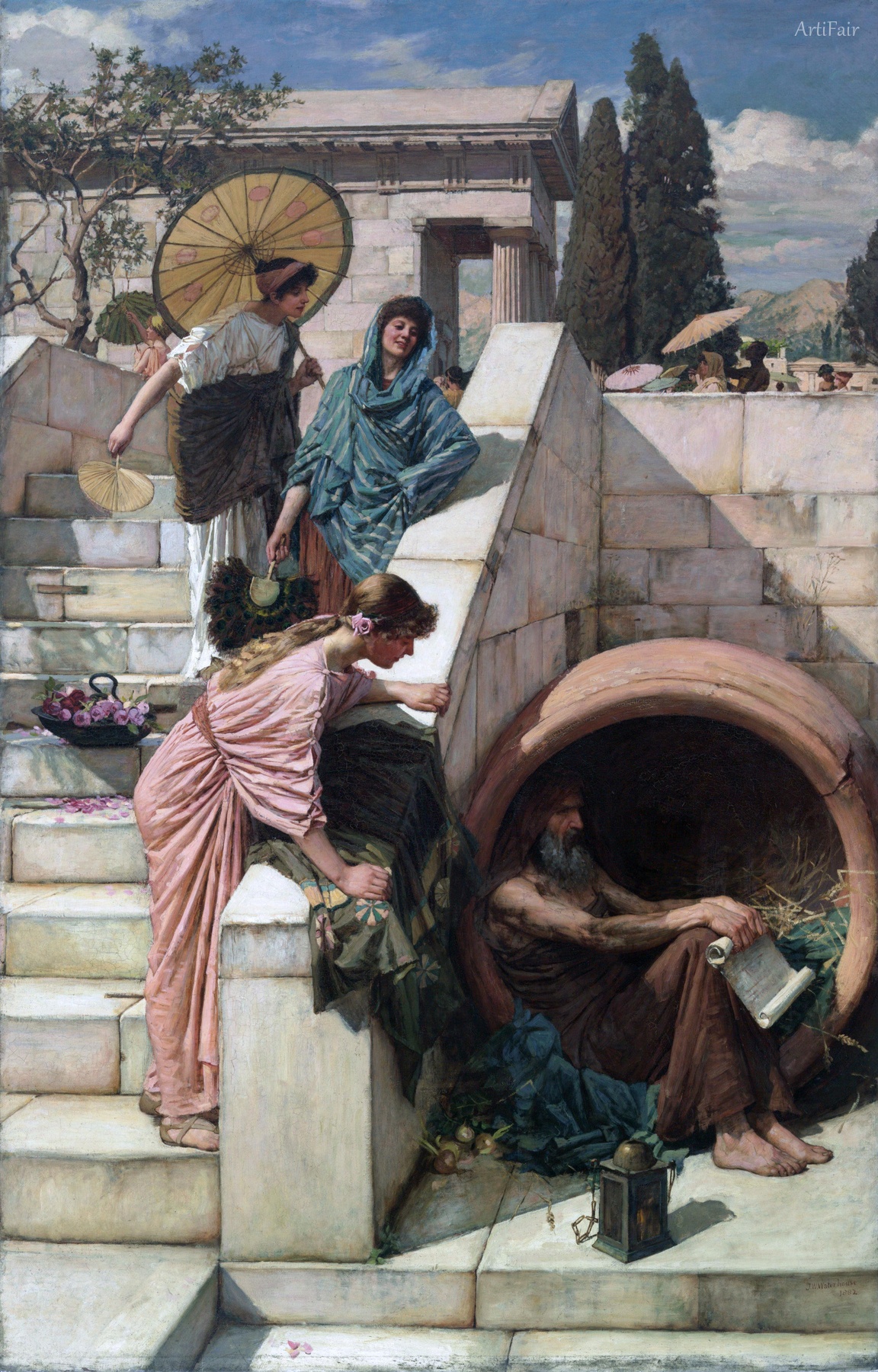
Art Appreciation
In this captivating piece, a moment of curiosity unfolds as figures move gracefully across a series of elegantly designed steps. The viewer's attention is immediately drawn to a central character, hunched inside a large amphora—a scene that evokes both whimsy and the profound philosophy associated with its subject, Diogenes. His expression embodies a quiet defiance, a contemplation of the material world surrounding him. The elaborate and flowing garments of the four women above him contrast sharply with his almost ragged appearance, enhancing the sense of their social status juxtaposed to his learned disdain for societal convention.
The composition, organized along diagonals, creates tension, leading the viewer’s eyes from the women with delicate fans, showcasing their elegance, yet revealing their intrigue toward the dark and enigmatic figure below. The brightness of the sun, filtering through trees in the background, gives a warm glow to the scene, while the color palette utilizes rich earth tones—especially in the figures—and soft pastels, reflecting an atmosphere that is simultaneously alluring and philosophically daunting. What strikes the heart is this emotional contrast between the vibrant curiosity of the women and Diogenes' stoic clarity; this invites us to ponder over the embrace or rejection of societal norms shaped by appearance and reality.
Historically, this imagery resonates deeply with the ideas of Cynicism and the rejection of material wealth popularized by Diogenes of Sinope. Waterhouse not only captures an iconic philosophical concept, but he also brings to life a narrative that elegantly mirrors contemporary society's relentless pursuit of status—drawing viewers into a reflection on their values throughout time. In this way, the artwork emerges as a timeless touchstone of dialogue about authenticity, individuality, and the meaning of happiness, demonstrating its significant role in both art history and modern discourse.